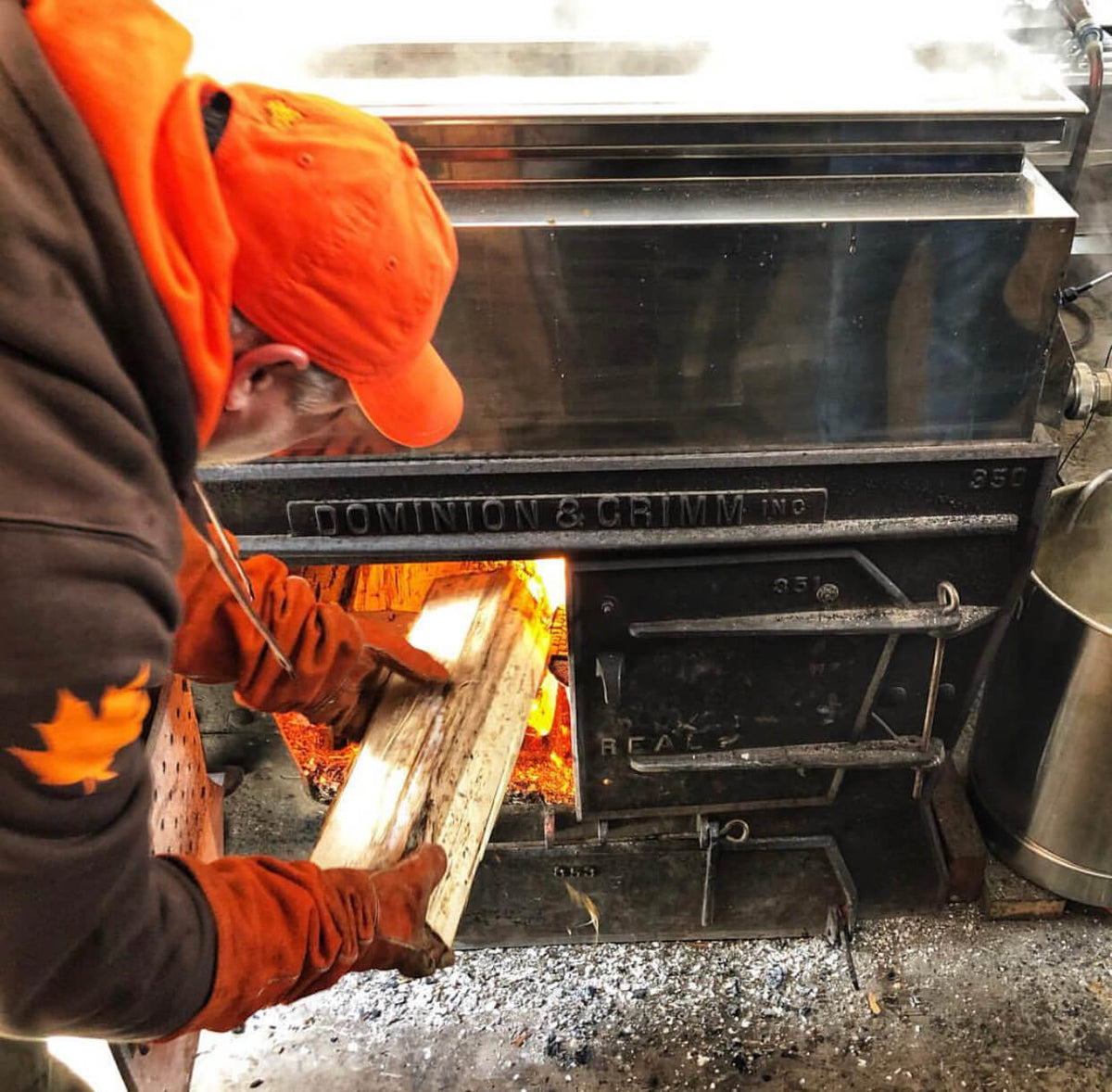
When we started Tree Juice Maple Syrup, we decided to work with Mother Nature and develop the business using sustainable practices.
From Forest to Kitchen
Our process starts in early February and runs to the middle of April, usually lasting 4-6 weeks. The maple syrup production process is the result of a natural phenomena: in spring, the maple trees convert stored starches from its root system into sugary sap. When the nights are below freezing, that sap is sucked up into the tree and stored in its cells as protection from the cold temperatures. During the day time, warmer temperatures release the sap back down to the root system and this is when we collect the sap!

Preparing the Syrup
Maple sap comes out of the trees through our spouts and into our tubing system, which transports the sap all the way down to the sugarhouse where it is then boiled down to become real maple syrup. We use a large 3.5 ft by 10 ft stainless steel evaporation pan called an evaporator to boil our sap over a wood fire. As the sap boils, water evaporates and the sap becomes denser and sweeter. The sap boils until it reaches 67% sugar content, the density of maple syrup.
Sugar makers like us love the number 40, as it represents key elements in our syrup making process:
- 40 degrees is the perfect temperature for the sap to start flowing
- It takes roughly 40 gallons of maple sap to make one gallon of maple syrup!
- We store our pure maple syrup in 40 gallon stainless steel barrels! :)

Sustainable Practices
Firewood: Just like the old timers, we are dedicated to using firewood as the source of fuel to boil our maple sap into syrup. The firewood is sustainably harvested from our property, and our forest is healthier as a result. The maple trees enjoy more room to spread their canopies and in return we not only gain firewood, but the sap quantity and sugar content is higher! Unlike many other companies that have switched to oil or propane as their fuel source, we will ALWAYS offer wood-fired maple syrup! We believe this also gives a superior maple flavor.
Our well-managed sugarbushes (the traditional term for a stand of sugar maples) located in the Drybrook Valley of the Catskills Mountains of New York, provide the added ecological benefit of acting as a carbon sink, pulling carbon from the atmosphere and releasing oxygen.

Tapping the Maple Trees: When Jake Fairbairn’s grandfather used to make maple syrup, he used a 7/16 drill bit and old metal spouts with buckets, sometimes having 4-5 buckets per tree!
Today we are blessed to have wonderful resources. The University of Vermont (UVM) Proctor Maple Research Center conducts experiments on various maple syrup related practices and shares its results so that we can improve our maple syrup production processes.
Nowadays, during the maple syrup harvest season, we use a smaller 5/16 drill bit (healthier for the trees), a plastic spout that is laced with silver (which kills bacteria and keeps the tree healthier) and most of our trees only get one spout, sometimes two. Less holes in the tree reduces the risk of disease, making for happier trees.

Reverse Osmosis: In order to meet the demand of our faithful syrupaholics, we needed to make more maple syrup. To make more maple syrup we need to tap more trees and boil more sap. Once collected, maple sap needs to be processed as quickly as possible to stop it from spoiling. As we added more trees and collected more sap, we found that we were not able to boil all the sap quickly enough. We turned to an amazing innovation called a reverse osmosis machine.
Reverse Osmosis machines are basically big filters that separate our maple sap into purified water and concentrated maple sap sugars. Typically sap coming straight from the tree has a sugar content of about 2%. We pass that sap through our reverse osmosis machine and get 8-10% concentrated sap. We are essentially taking out about 75% of the moisture before we start boiling. This makes our boiling practices more efficient, using less firewood and keeping your maple farmers from having to boil through the night! This innovation has allowed us to grow from 250 to 8000 taps and make LOTS more sweet stuff!
Bottling and Labeling: We like to use glass bottles and metal lids for our maple syrup because they are recyclable and show off the true color of our maple syrup. We make exceptions for some of our wholesale partners who prefer bulk syrup delivered in plastic gallon jugs so it’s safer to store without breakages. We take back used bottles to steam clean and reuse them whenever possible to avoid unnecessary waste. All of our labels come on big rolls of paper that we collect to be used as fire starter material when we boil our sap! Nothing goes to waste!
Packing and Shipping: We try to avoid using any plastics and only wrap and package in cardboard and recycled paper. We also try to reuse old boxes and packing materials whenever we can. So you may see different styles of packaging in your various orders!


